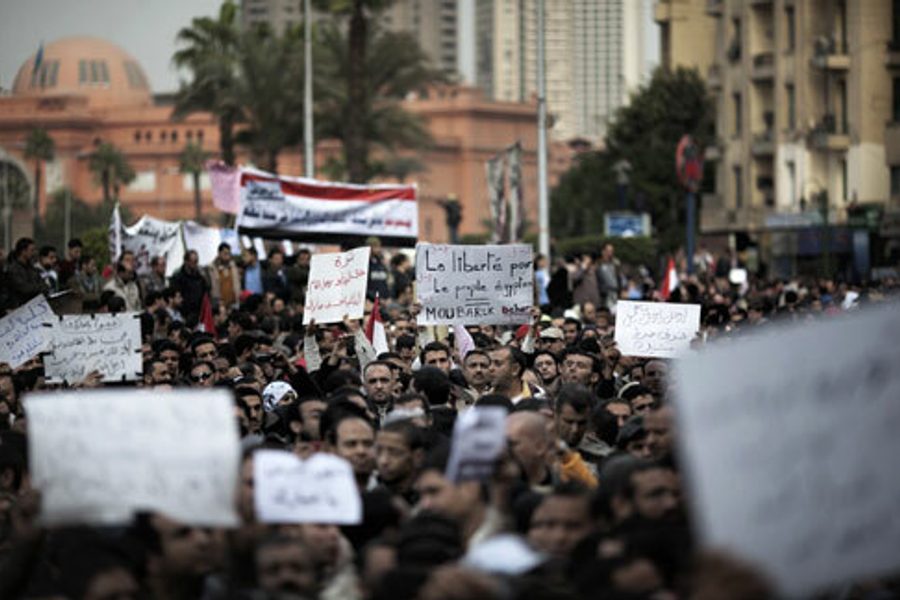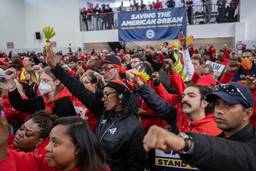
When they began staging their protests in downtown Cairo, it seemed so risky, so unimaginable, so likely to be brutally swatted away by the heavy-handed hordes of government thugs.
In the republic of fear that has long reigned over Egypt, such things didn’t happen. Showing the smallest hint of disobedience could be painful and sometimes fatal.
Yet the workers kept on coming despite the beatings, the threats and long confrontations with the government and companies that seemed to be going nowhere, and rarely toward workers’ interests.
But they were — I know what I saw in Cairo last year. The nation’s workers were one of the groups who began to open the doors to the room where Egyptians have for decades stored their collective grit and outrage. They are now rediscovering those national assets.
The forces that first brought angry workers to downtown Cairo and to factories’ gates across the country a few years ago were powerful and deeply disruptive —the reason for the venom that poured forth.
Several years ago, when the state stepped up its privatization of government-owned facilities in a further liberalization of the one-time socialist economy, workers more often wound up as losers.
The new owners trimmed the ranks of the facilities, cut wages, reduced benefits and essentially wiped out the tiny sense of economic security that the workers had clung to. As the demonstrations grew against the new owners, the government promised to look into the problem and to slow the privatization. But the damage was already done and the promises were rarely met.
While Egypt’s economy boomed and luxurious gated communities blossomed in the desert surrounding Cairo, workers’ lifestyles were withering away as inflation ate away at their meager earnings and wages remained stuck at subsistence levels.
Time and again workers pleaded for the government to boost the minimum wage, which was about $7 per month for most of last year. But the government held off and officials said that workers actually were doing better. Their average wages were up around $70 a month, according to government officials.
So as new hotels and new malls bloomed, four out of ten Egyptians were earning less than $2 a day last year.
This viper economy meant that there has been a booming market in Egypt for people to sell their body parts to merchants in Egypt and across the Middle East. But even when they do, they are often cheated out of the money and left terribly sick from an economic fantasy gone bad.
Desperation has brought a brisk trade in selling young girls as short-term brides to wealthy Arab visitors, a euphemism meant to deal with Muslim sensitivities. In actuality, the girls are prostitutes who are sold for weekend services to super rich Gulfies, who have left behind thousands of youngsters without financial or any other support.
In most countries of the world, the ones with the highest unemployment rates are the low educated. Not in Egypt. College graduates dominate the ranks of the unemployed because many of their degrees are worthless, and the only jobs many can find are low-wage service jobs.
That is why there has been a slow trickle of young well-educated Egyptians trying to smuggle themselves into Europe and into better lifestyles. A number of these have lost their lives at the hands of heartless smugglers.
Without stable, decent-paying jobs, they have no prospects for improving themselves and no chance of getting married. Before marrying in Egypt, a groom needs to be able to support a new family. Many young men can’t and that is just one reason why you see mostly young faces marching in Cairo and Alexandria today.
On the books, Egyptian officials have been able to point to figures showing a national economy growing steadily.
But when Egyptians have reached into their pockets, they have often found barely enough to keep them going. That’s one reason why the country has a high rate of stunted children – youngsters who never grow to full size.
On paper, most workers belong to unions. But in reality the unions have shown little interest in workers’ rights or securing a better future for them. That is why nearly all of the more than 3,300 factory occupations, strike and other forms of protest since 2004 involved workers on their own or through their attempts to create dissident unions.
In a traditional society, the men have been the ones that have led the protests. But female workers began shouldering their share of the fury several years ago, taking part in the demonstrations and protests. In one case, women alone led and dominated a factory occupation, their children by their sides.
Hungry, tried and frustrated, workers began challenging the government to improve their lives several years ago. Sometimes the uproar was so great that the government caved in and met their demands. But it always took a clinched battle for the government to eventually back away and reach a deal, factory by factory.
But this time, they are no longer worried about what they could lose.
A former labor writer for the Chicago Tribune, Stephen Franklin is a Pulitzer Prize finalist and an adjunct professor at the University of Illinois Urbana-Champaign School of Labor and Employment Relations.







